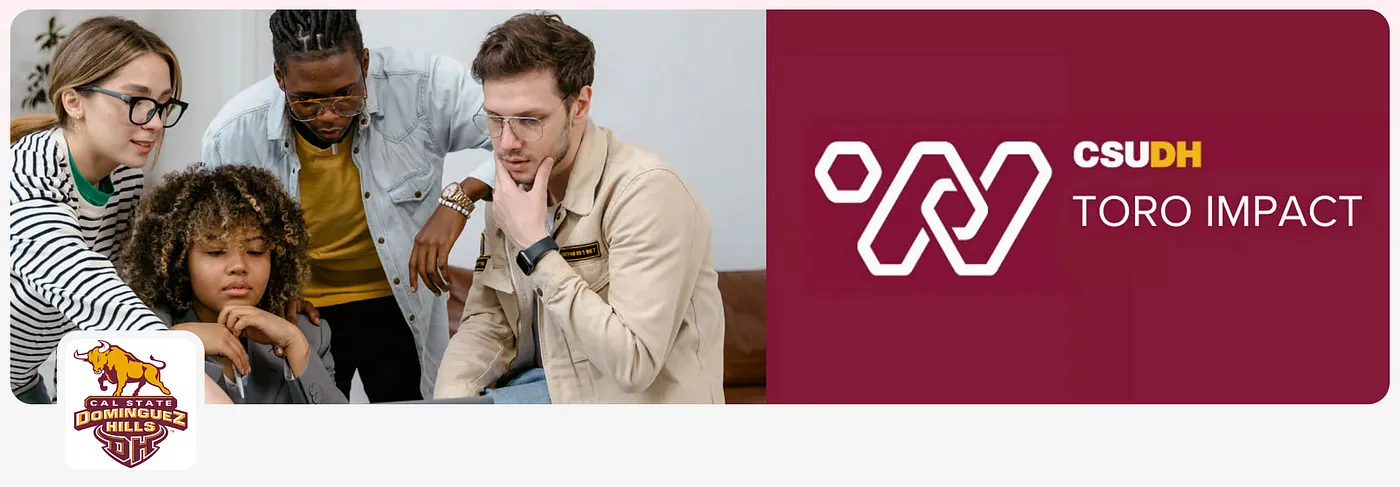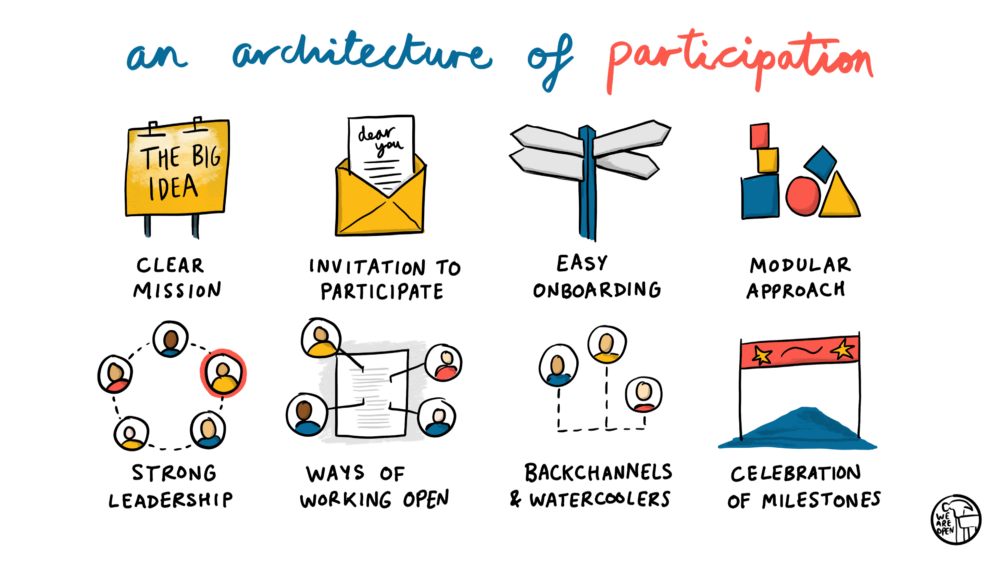At the end of the month, we’ll be gathering a number of community-based organisations, interns and faculty in an online design workshop to jump start a Community of Practice together with Cal State University and Participate. This community, supported through the Internet for All programme, will provide an online space for those promoting access and training in digital technologies in the CSUDH community.
We know that building a thriving and supportive online community requires some deliberate efforts. In this blog post, we explore the idea of a “minimum viable community of practice” (MVCoP). Once again, we dive into our Architecture of Participation (AoP) framework, and discuss running design workshops to empower individuals to co-design their community.

What is a MVCoP?

Let’s start with the value of a Community of Practice. Communities of Practice (CoPs) are important for people to network, share knowledge, and learn from each other. They play a vital role in supporting lifelong learning and helping people level up throughout their careers. By connecting with like-minded peers who share similar interests and expertise, people can tap into a vast pool of collective wisdom and experience. Through active participation in discussions, collaborative projects, and sharing of best practices, community members continuously learn from each other, gaining new insights, perspectives, and opportunities.
Communities of practice not only foster professional growth but also create opportunities for personal development, encouraging individuals to stay curious, adapt to change, and embrace a lifelong learning mindset. We develop real relationships in these communities, and we learn about belonging and acceptance.
But before all of that, we have to design spaces that are supportive, interesting, engaging and inclusive. This takes intention. A MVCoP is a community set up to encourage organic and collaborative growth and belonging.
The Bare Minimum AoP

We’ve written extensively about one of the tools, the Architecture of Participation (AoP), that we use to help us build thoughtful, inclusive and empowering communities. Briefly, because we really have written about this all over the internet, the AoP is 8 steps to help people cover all their bases when thinking about volunteering, contributing and facilitating communities.
But what are the key steps for building a Minimum Viable Community of Practice? Well, we think that the most important to start with are:
- Ways of working openly — Even at the very beginning, people need to see what’s happening within the community and how they can get involved. The open principles of transparency, inclusivity, collaboration and adaptability underpin community. Does the project have secret areas, or is everything out in the open?
- Backchannels and watercoolers — We need places to share memes, make jokes and chat about the weather. These evolve organically, but including them in your MVCoP design suggests understanding of the social dynamics within groups of people. Are there ‘social’ spaces for members of the project to interact over and above those focused on project aims?
- Celebration of milestones — Building a space where people belong means thinking of them as, you know, people. We need motivation and recognition. Does the MVCoP recognise the efforts and input of the community members?
Empowering Co-Design

Running a design workshop is a great way to empower co-design within a community. By bringing together individuals with diverse perspectives, skills, and experiences, a design workshop creates a collaborative space where participants can actively contribute to shaping the emerging community.
We facilitate such workshops to encourage open dialogue, brainstorming, and hands-on activities. We aim to help people feel a sense of ownership and engagement because, after all, this is a community. This inclusive approach means that we can work together on the community’s mission, invitations and onboarding. Our intentions and goals are co-created and reflect the collective aspirations and needs of the group.
By actively involving community members in the design process, a design workshop not only strengthens the sense of belonging but also ensures that the resulting community is truly representative of its members’ interests, resulting in a more vibrant and sustainable community of practice.
Conclusion
Building a minimum viable community of practice (MVCoP) is a dynamic and iterative process that requires active involvement from community members. Empowering people to co-design their community will help that community evolve. The journey to a thriving community starts with small steps, but with dedication and collective effort, it can lead to a flourishing network of professionals supporting each other’s growth and success.
Need some community help? We’ve written an entire guide! Or you are very welcome to get in touch!